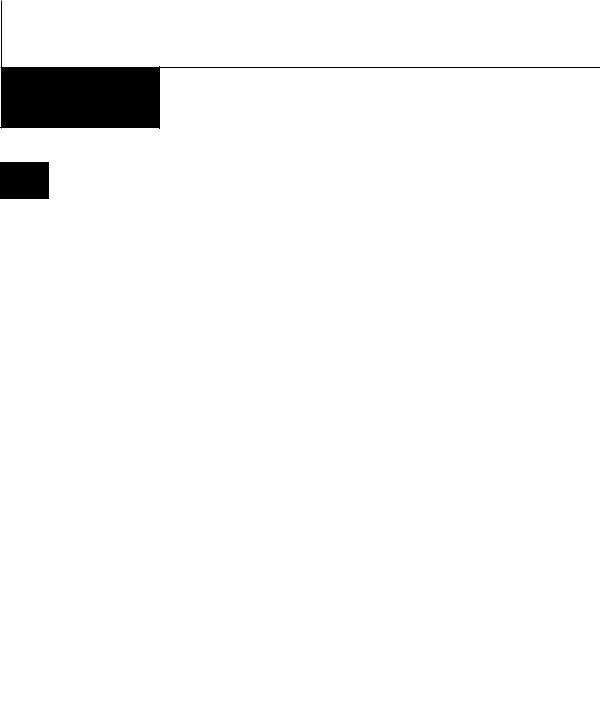
about_the_usa
.pdf
12 Module 1C / More National Holidays
F Which holiday is each sentence about? Write M for Memorial Day, L for Labor Day, C for Columbus Day, and V for Veterans Day. Sentence 9 has two answers.
1. C On this day in 1492, an explorer from Italy, with the support of the King and Queen of Spain, discovered a new world.
2.This holiday was first called Armistice Day.
3.This holiday was first called Decoration Day.
4.It began after the Civil War in remembrance of the dead on both sides.
5.This holiday is in honor of the industrial spirit of the U.S. because it represents the idea that all work has dignity.
6.It began on November 11, 1919, in remembrance of the dead soldiers of World War I.
7.A labor leader had the idea for this celebration over 100 years ago.
8.On this patriotic holiday, school children learn the importance of education and hard work for progress.
9.Today on this day of remembrance, Americans honor veterans and the dead of past wars with parades and ceremonies.
10.Today, people decorate graves, watch military parades, and may see the Indianapolis 500 on this holiday.
11.It is the last three-day weekend of summer, before school begins, and people use it to relax.
12.This holiday is in honor of the achievement of a European explorer.
G Is there a holiday to honor a famous person in your native culture? In small groups, tell about it. Answer these questions:
1.What is the history of the holiday? Why and when did it begin?
2.What is the meaning of the holiday?
3.Who celebrates the holiday?
4.Where, when, and how do they usually celebrate it?
What similarities did you find in two or more holidays of different cultures? Tell the class.
H Repeat Exercise G, but this time talk about a patriotic holiday.

|
|
|
2 |
Americans |
UNIT |
|
|
|
|
Module 2A: Famous Presidents
A Work in groups of four. Each of you studies the information about a different one of the four presidents. In turn, summarize your information in your own words for the group.
1. |
Before the United States won independence from Brit |
|
ish rule, George Washington was a farmer in the colony |
|
of Virginia. He served as a military leader in the Revo |
lutionary War. The colonists trusted him because he did not want power for himself. He wanted all the states and the people to work together as one. He wanted the government to serve the people well.
Washington said that power should belong to institutions, not to men. He also said that people could understand the U.S. Constitution in many ways, not just one. He did not think that the United States should have strong ties with other countries.
George Washington was the first President of the United States from 1789 to 1796. He is often called “the Father of Our Country.”
2. |
Thomas Jefferson could do many things. As a young |
|
man, he was a farmer and a lawyer in Virginia. He was |
|
also a scientist, an inventor, a philosopher, and an |
|
architect. He designed his own home, called Monticello. |
He could communicate in French, Italian, Spanish, Latin, and Greek.
Many of Jefferson’s ideas became basic principles of the government of the United States. For example, he believed that “all men are created equal” (are born the same and should receive the same treatment under the law). He also said that power must come from “the consent of the governed” (the voters, not the leaders). He wanted free elections, a free press, and free speech.
Thomas Jefferson held many important government jobs. He was Ambassador to France, Secretary of State (under George Washington), Vice President (under John Adams), and the third President of the United States, from 1801 to 1809. As President, Jefferson bought the huge Louisiana Territory for the United States from France.
13

14 Module 2A / Famous Presidents
Abraham Lincoln grew up in Kentucky in a log cabin. 3. He couldn’t go to school, so he taught himself. He became a lawyer. Friends called him “Honest Abe.” As a delegate from Illinois, he served in Congress from 1847
to 1849. Lincoln was against slavery and gave some famous speeches about his ideas when he was running for the Senate.
In 1861 Abraham Lincoln became the sixteenth President of the United States. He wanted the states of the Union to work together as one country, but he had to lead the North against the South in the Civil War. Some people thought that Lincoln was too strong as President be cause he used power that the Constitution did not give him.
President Lincoln freed the slaves with the Emancipation Proclamation. He had a plan to bring the South back into the Union after the Civil War, but he couldn’t carry out the plan because he was assassinated. In 1865 an actor named John Wilkes Booth shot Abraham Lincoln.
John F. Kennedy was President for only three years, 4. from 1961 to 1963, but his personality and ideas
changed America. He was both the first Roman Catholic and the youngest President in the history of the coun try. He set clear goals for America. For example, he promised that the United States would land a man on the moon before 1970.
Kennedy supported the ideas of Martin Luther King, Jr. and fought for civil rights, fair housing, and programs to stop poverty. He asked Congress for more money for education and medical care for elderly people.
Kennedy was against Communism. For example, when the Soviet Union put missiles in Cuba, he sent U.S. ships to surround the island. But he believed that the best way to fight Communism was not by sending armies but by attacking poverty and injustice. He organized the Alliance for Progress to help the countries of Latin America. He started the Peace Corps and sent Americans to over sixty countries in Africa, Asia, and South America. These young volunteers worked and lived with the people, built schools, and taught farmers more modern methods.
Kennedy was a man for the future. He worked to stop the testing of nuclear weapons. But on November 22, 1963, he was assassinated.

UNIT 2 / Americans 15
B Which President is each sentence about? Write the first initial of his last name on the line.
W = Washington J = Jefferson L = Lincoln K = Kennedy
1. J This farmer and lawyer from Virginia was also a scientist, an inventor, a philosopher, and an architect, and he knew many languages.
2.The colonists trusted this farmer from the colony of Virginia because he did not want power for himself.
3.This young Roman Catholic was President for only three years because he was assas sinated in 1963.
4.He served as a military leader in the fight of the colonists for independence from
British rule.
5.This honest man taught himself and became a lawyer and a Congressman from Illinois.
6.He was against slavery but wanted the states of the North and South to work to gether as a nation.
7.Many of his ideas (for example, about equality, “the consent of the governed,” free press, and free speech) are basic principles of the government of the United States.
8.He was an Ambassador, Secretary of State, and Vice President before he became the third President of the United States.
9.He was a man for the future, and one of his goals was to land a man on the moon before 1970.
10.As the sixteenth President, he used power that was not given by the Constitution when he led the northern states in the Civil War.
11.He did not think the United States should have strong ties to other nations.
12.He bought the Louisiana Territory for the United States from France.
13.He is often called “the Father of Our Country.”
14.His Emancipation Proclamation freed the slaves, but he was assassinated before he could bring the South back into the Union.
15.He supported civil rights, fair housing, and programs to stop poverty, and he wanted more money for education and medical care for elderly people.
16.He tried to stop Communism with the Alliance for Progress and the Peace Corps and was against nuclear weapons.

16 Module 2A / Famous Presidents
C Which of the four Presidents said or wrote these famous quotes? Write their names on the lines. (The information in A will help you.)
George Washington
1.John F. Kennedy
Thomas Jefferson |
Abraham Lincoln |
John F. Kennedy |
:“And so, my fellow Americans, ask not what your country can do for you: Ask what you can do for your country. My fellow citizens of the world: Ask not what America will do for you, but what together we can do for the freedom of man.”
2. |
|
: “We hold these truths to be self evident, that all |
|
|
men are created equal, that they are endowed by |
|
|
their Creator with certain unalienable rights, that |
|
|
among these are life, liberty, and the pursuit of |
|
|
happiness.” |
3. |
|
: “It is our true policy to steer clear of permanent |
|
|
alliances, with any portion of the foreign world.” |
4. |
|
: “A house divided against itself cannot stand. I |
|
|
believe that this government cannot endure perma |
|
|
nently half slave and half free.” |
D In small groups, discuss the meanings of the quotes in C. On the lines, write the ideas in simpler language.
1.Americans should work for America. Everyone should work for freedom.
2.
3.
4.
E In books, find other famous quotes by Presidents of the United States. Write them on the chalkboard and discuss their meanings as a class.

UNIT 2 / Americans 17
Module 2B: The History of Immigration
A Work in pairs. Look only at this page. Tell your partner these facts about immigration history in order.
1.There were about twenty-five million “native Americans” (Indians) living in North and South America.
2.The English were the largest immigrant group to settle in North America. They were farmers, fishermen, and traders.
3.By the time of the American Revolution, there were also many immigrants from Scotland, Ireland, France, Holland, Germany, Sweden, and Poland. Most of these settlers were Protestants.
4.The Spanish settled mainly in the Southwest, especially California. They were managers, priests, and soldiers.
5.American slave traders captured black Africans and forced them to work on plantations in the United States.
to 1600’s 1700’s 1600’s 1500’s 1800’s
B Now listen to your partner and number these facts 6-10 in correct time order.
After the Gold Rush in California, 100,000 poor Chinese came to work in mining camps and on the railroad.
The U.S. government abolished quotas for immigration from non-European nations. Today, most immigrants are from Asian and Latin American countries.
6 During the Industrial Revolution, about 3.5 million Irish Catholics left poverty and discrimi nation to work in America. They were coal miners and railroad and canal builders. At the same time, many Germans became farmers, laborers, and businessmen in the United States.
During the “Great Migration,” twenty-five million Europeans of almost every nationality immigrated to America. They included Russian and Polish Jews, Slavic people from Eastern Europe, Italians, Greeks, Armenians, and Syrians. Canadians, Mexicans, and Central Americans came, too.
The United States welcomed thousands of refugees after the end of World War II.

18 Module 2B / The History of Immigration
C Work in pairs. Look only at this page. Your partner will tell you some important facts about immigration history. Num ber them 1-5 in correct time order.
American slave traders captured black Africans and forced them to work on plantations in the United States.
By the time of the American Revolution, there were also many immigrants from Scotland, Ireland, France, Holland, Germany, Sweden, and Poland. Most of these settlers were Protestants.
The English were the largest immigrant group to settle in North America. They were farmers, fishermen, and traders.
The Spanish settled mainly in the Southwest, especially California. They were managers, priests, and soldiers.
1 There were about twenty-five million “native Americans” (Indians) living in North and South America.
D Now tell your partner these facts about immigration history in order.
6. |
During the Industrial Revolution, about 3.5 million Irish Catholics left poverty and dis |
to 1820 1880 |
||
|
crimination to work in America. They were coal miners and railroad and canal builders. |
|||
|
At the same time, many Germans became farmers, laborers, and businessmen in the |
|||
|
United States. |
|
|
|
|
and on the railroad. |
|
|
|
|
to1850 1870 |
|||
7. |
After the Gold Rush in California, 100,000 poor Chinese came to work in mining camps |
|
|
|
8. |
During the “Great Migration,” twentyfive million Europeans of almost every nationality |
|
|
|
to 1880 1930 |
||||
|
immigrated to America. They included Russian and Polish Jews, Slavic people from |
|||
|
Eastern Europe, Italians, Greeks, Armenians, and Syrians. Canadians, Mexicans, and |
|||
|
Central Americans came, too. |
|
|
|
|
|
|
|
|
9. |
The United States welcomed thousands of refugees after the end of World War II. |
1940’s 1950’s |
||
|
|
|||
|
|
|
|
|
10. |
The U.S. government abolished quotas for immigration from nonEuropean nations. |
1960’s 1970’s |
||
|
Today, most immigrants are from Asian and Latin American countries. |
|||
|
|
|
|
|

UNIT 2 / Americans 19
E Tell some important facts about immigration history. You can use these pictures for ideas.
F Changes in Immigration
The history of the United States is the history of immigration. Before 1880, the United States welcomed immigrants from all countries. Because Americans were moving west, factories in the East needed new workers. Most of these immigrants came from northern and western Europe, so they looked like born Americans, and their cultures were similar. The talents, spirit, and hard work of millions of immigrants built American farms, industry, and cities.
But then Americans began to worry about the influence and power of large groups of immi grants from cultures very different from their own. In the next century, the U.S. government passed many immigration acts. Before World War II, these laws limited immigration, especially from non-European nations. But after the war, new acts made it easier for refugees and immi grants to come to the United States.
G Write T for true or F for false. Correct the false sentences.
1.The United States passed many laws to limit immigration before 1880.
2.Many European immigrants came to work in the factories in the East.
3.America needed the talents, spirit, and hard work of immigrants to grow.
4.Born Americans probably accept immigrants from similar cultures more easily than immigrants from very different ones.
5.America welcomed immigration before World War II, but after the war, new laws made it harder for refugees to come to the United States.

20 Module 2B / The History of Immigration
H Immigration Law
YEAR |
THE ACT OR LAW |
THE EFFECT OF THE LAW |
|
|
|
1882 |
The Chinese |
prohibited the Chinese from entering the |
|
Exclusion Act |
country. |
|
|
|
1907 |
T. Roosevelt’s |
stopped Japanese laborers from coming to |
|
“Gentlemen’s |
the United States. |
|
Agreement” |
|
|
|
|
1917 |
The Literacy |
kept out illiterate immigrants (people |
|
Test Act |
unable to read or write in any language). |
|
|
|
1924 |
An immigration |
set up a quota system (yearly limits on the numbers of |
|
act |
immigrants from each country). The law allowed higher |
|
|
quotas for some nations than for others. |
|
|
|
|
The National |
excluded all Japanese, Chinese, and other |
|
Origins Act |
Asians from the United States. |
|
|
|
1948 |
The Displaced |
allowed 500,000 war victims to immigrate |
|
Persons Act |
to the United States. |
|
|
|
|
The Fulbright |
brought in scholars from around the world. |
|
Act |
Many of them stayed in this country. |
|
|
|
1952 |
The McCarran- |
opened the United States to Asian immigration. But the |
|
Walter Act |
quota system still discriminated against non-Europeans. |
|
|
|
1953 |
The Refugee |
admitted over 200,000 refugees outside |
|
Relief Act |
the quota system. |
|
|
|
1965 |
An immigration |
set area quotas instead of national ones: |
|
act |
120,000 immigrants per year from the Western |
|
|
hemisphere (Canada and Central and South America) |
|
|
and 170,000 per year from the rest of the world. |
|
|
|
1986 |
The Immigration |
gave amnesty to many illegal aliens and |
|
Reform |
allowed them to legalize their status. |
|
Control Act |
The law puts penalties on employers that |
|
|
hire employees without work authorization. |
|
|
|
I Make sentences about the information in H. You can use this sentence pattern.
EXAMPLE: In 1882, the Chinese Exclusion Act prohibited the Chinese from entering the country.
In |
|
, |
|
. |
|
(year) |
(the act or law) |
||

UNIT 2 / Americans 21
Module 2C: Historical Figures
A In groups or as a class, answer these questions about each picture: (1) Why do you think this person was famous?
(2) What do you think this person did?
a |
b |
c |
John James Audubon |
Susan B. Anthony |
Clara Barton |
(1785-1851) |
(1820-1906) |
(1821-1912) |
d |
|
f |
|
Cesar Chavez |
Samuel Clemens |
Thomas A. Edison |
|||
(1927-1993) |
(1835-1910) |
(1847-1937) |
||||
|
|
|
|
|
|
|
g |
|
|
|
i |
|
|
|
Duke Ellington |
Henry Ford |
Benjamin Franklin |
|||
(1899-1974) |
(1863-1947) |
(1706-1790) |
||||
|
|
|
|
|
|
|
j |
|
|
|
l |
|
|
Hideyo Noguchi |
Eleanor Roosevelt |
Lawrence Welk |
(1876-1928) |
(1884-1962) |
(1903-1992) |
